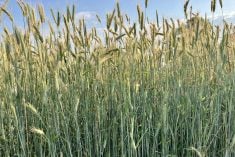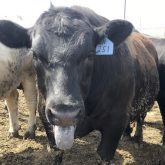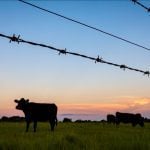In the Union Forage warehouse, general manager Geoff Barker explains the process of creating custom forage seed blends for clients, his voice denoting his Australian roots. Towering shelves lining the south Calgary warehouse are stacked with pallets and large totes of seed, neatly labelled for traceability purposes. On the wall, a large promotional poster states the company’s motto, “Graze Year-Round.”
At first glance, it may seem an unusual focus for a western Canadian-based forage company. But for the Union Forage team members who grew up in the Southern Hemisphere, applying practices from other countries to a Canadian context has led to success for their customers.
Read Also
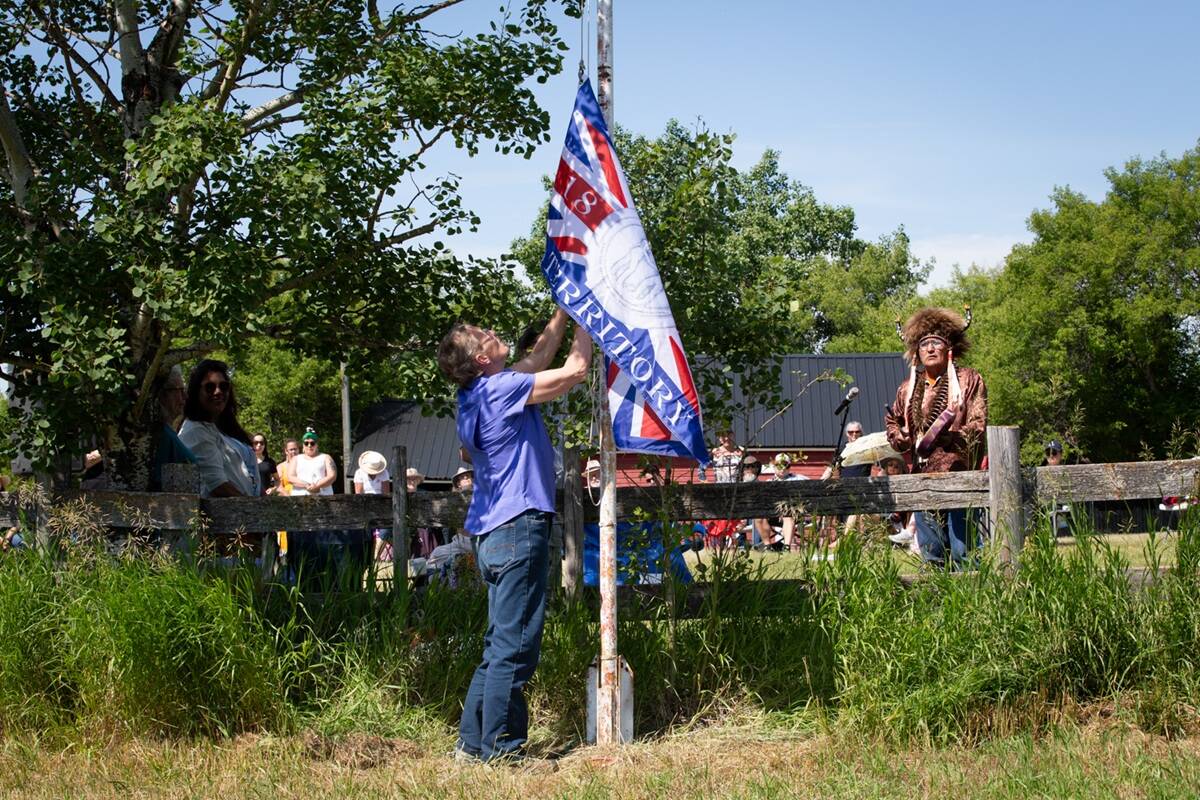
Treaty Land Sharing Network expands reach in Saskatchewan and Alberta
The Treaty Land Sharing Network, which connects land holders with First Nations and Metis people, has expanded since it began in 2018
When Union Forage’s founder, Graeme Finn, came to Canada from Australia, he used rotational grazing practices on his own cow-calf operation but wanted to go further and increase the feed quality for his cattle. “We take that for granted, year-round grazing, and I said, ‘Why can’t we do it here?’” says Finn.
Mentors from the Foothills Forage and Grazing Association, many of whom used swath grazing, encouraged Finn to try year-round grazing principles. He imported rapeseed from New Zealand to see how a product not traditionally grown in Western Canada might work, and his success with this route prompted interest in other producers who wanted to extend the grazing season.
Today, Finn is Union Forage’s president and senior forage specialist. He owns the company along with Barker, forage specialists Ben Stuart and Roger Meyer and business development team members Brent Difley and Darren Keown.
The company’s steady growth is due in part to its people’s willingness to think outside the box and adapt their own experience to fit the needs of Canadian farmers and ranchers. For example, Barker was raised on a dairy farm in Tasmania, where the temperate climate lends itself nicely to year-round grazing and dairy cattle head out to pasture after being milked, rather than being fed in barns.
“In Australia, the cow goes and does the work, so the cattle are … a little bit more robust and they’re built for grazing, so the production per cow would be a bit less than here,” he says.
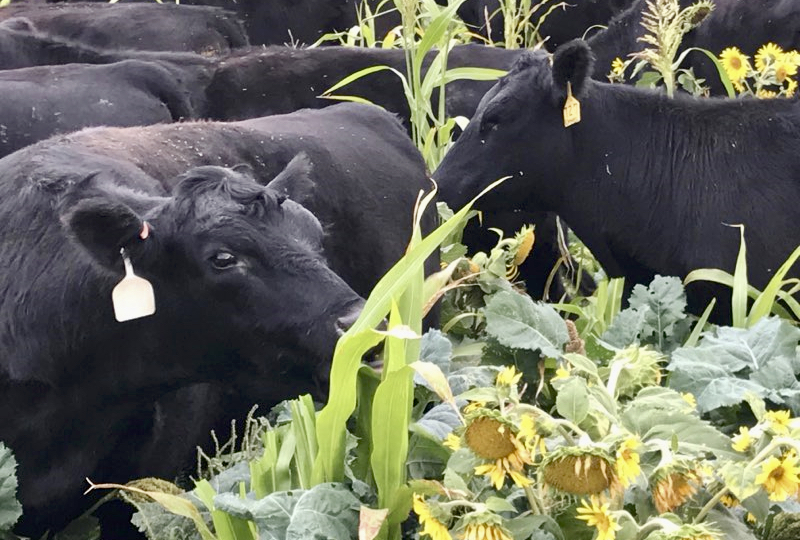
“But the cost of production is way cheaper. It’s because we’re utilizing rotational grazing, high-quality forages, perennial grasses with perennial clovers. And you’ve still got some seasonality — so we still use irrigation in the summertime, feed out silage in the wintertime — but your stocking rate is high,” he says.
“Traditionally farmers here would say that wouldn’t work here because Canada is a harsh winter climate. The truth is there’s a balance in the middle.”
Forage specialist Ben Stuart, who is originally from New Zealand, uses these rotational grazing principles with large herds on his cow-calf operation at Rhein, Sask. Barker says “It’s not going to be as perfect conditions as we would have in Tasmania, but the reality is by using this different management and some of the products that Union Forage sells, you can extend the grazing window a long way.”
Union Forage offers annual and perennial seed mixtures designed to lengthen the grazing season as well as improve feed quality, with options available for all Canadian growing conditions. These mixtures contain a variety of species — more than are generally used in other forage blends — including annual forages developed in New Zealand and Holland, such as brassicas, Italian ryegrass and plantain.
Along with their noteworthy product lineup, the Union Forage program draws on its staff’s depth of knowledge, many of whom also raise cattle and can draw on their practical experience to understand the customers’ needs. The company has an extensive dealer network throughout Western Canada and now has dealers in Ontario, Montana and Minnesota, all of whom are encouraged to use the knowledge of their forage specialists while working with producers.
“All of us live and work in this industry and sell cattle in the industry,” says Finn. “If I can’t justify doing it myself, why should I make you justify doing it?”
Understanding what the producer wants to achieve and doing the best by them are key to the Union Forage approach, which focuses on consulting and sharing expertise to support customers.
“My philosophy for regenerative agriculture is the family has to come first, then the livestock, then the soil, because if the family can’t afford to do this, they shouldn’t be doing it,” says Finn.
Cattle come next because we need to feed them as efficiently as we can, he says, “and if we can do it either with perennials or annuals, either summer grazing or winter grazing, then that’s going to be an economic (benefit) for the farm. And then third is the soil, which all knits in with the cattle.”
For customers eager to try something new, Union Forage’s specialists will suggest they start small, then adapt and proceed based on how successful it is for their operation, offering support along the way. “We’re all about building a long-term relationship with our customers, and that’s helped us have sustainable growth,” says Barker.
How they help producers find success may look different depending on the circumstance. “In tougher years, then you really kind of have to be prepared to change your strategy,” he says, referring to the hot, dry conditions that much of Western Canada faced last summer.
For example, Finn prompted many customers to take a different approach than usual, rather than buying seed blends that likely would fail to thrive in a drought situation.
“Then later in the season when it did rain, some of them could pivot and switch gears a little bit to plant some brassicas after the silage came off, and then they had success because it was warm and wet and they could still build some stockpile forage for winter grazing,” says Barker.
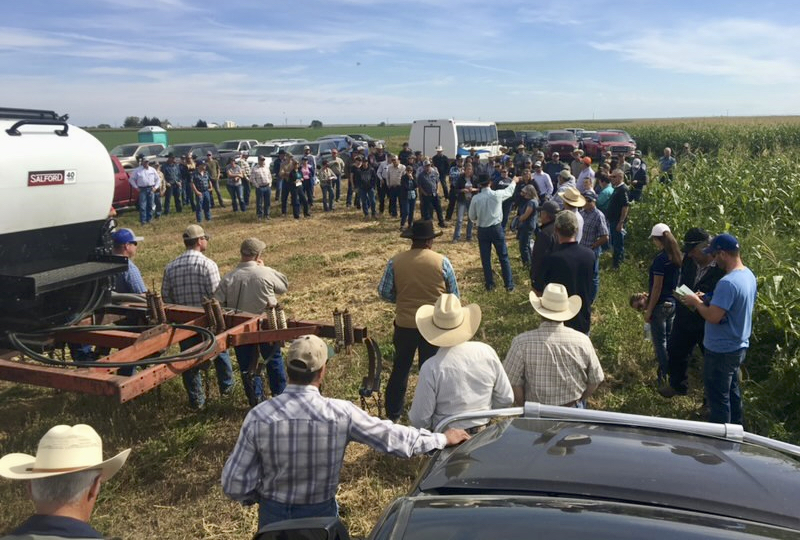
As part of sharing new insights and perspectives with customers, Union Forage’s annual field day includes a lineup of speakers, to prompt customers to think differently about how they can approach forage production. Speakers have included leaders in forage production from the partner companies they work with.
“It’s good to get their perspective from not just Western Canada, either, from other parts of the world, and this is what we’re doing here. And it’s not all going to apply, but you can always glean some information from what they’re saying,” says Barker.
In keeping with this focus, Union Forage has hosted week-long trips to New Zealand in the past to broaden its customers’horizons. Compared to Canadian agriculture, grazing intensity is much higher in New Zealand, as the country’s small size and high land prices mean farmers must maximize their production.
“It’s a different year-round grazing system, but it’s little things they can take away and say, ‘No wonder we should be using brassicas up here or using more electric fencing,’” says Finn.
Looking ahead, the Union Forage team wants to continue down the path the company is currently travelling. “We’ve managed to increase market share steadily every year, and we’re quite proud of that,” says Barker. “We’ve branched out in a couple of other areas, and one is export, with relationships and networks within the industry — that’s an add-on to our company.”
They’re particularly excited about licensing AAC Glenview sainfoin, developed by the Agriculture and Agri-Food Canada Lethbridge Research and Development Centre. Although it’s ideal for Canadian growing conditions, this product has received considerable international interest in the last few years, with opportunities for export to the U.S., Ireland and New Zealand.
Establishing a relationship with a major Irish seed company to sell AAC Glenview sainfoin has been exciting for Union Forage, and Barker sees parallels between the growing conditions in Ireland and Tasmania that could result in great success for interested Irish farmers.
“In the springtime is when you run into a lot of bloat problems with clovers … and if they can incorporate some sainfoin into their perennial pastures that they’re grazing this spring, that could be a gamechanger,” he explains.
As well, they’ve found a full-circle moment in being able to bring this product to New Zealand farmers. “We’ve been an importer from New Zealand for years, but to sell them back something that’s a made-in-Canada solution is something we’re very proud of.”




